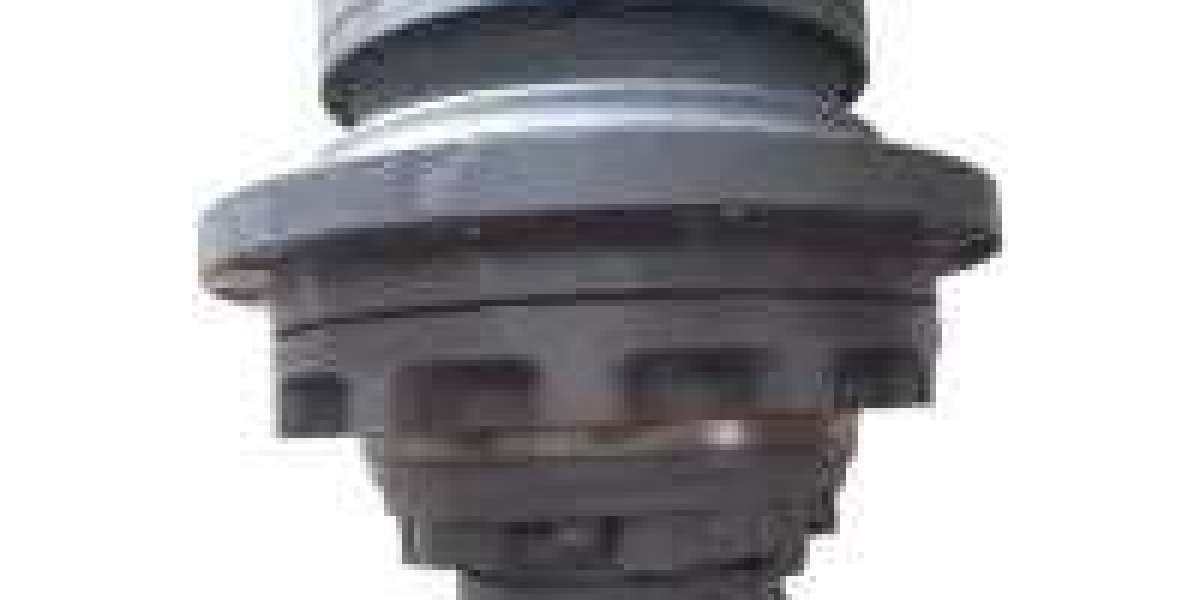Imagine standing on a construction site at dawn. The sun is rising, machines roar to life, and you notice a towering excavator lifting earth with effortless strength. You wonder — what makes this giant move so smoothly, with such precision? The secret lies not just in the engine or steel arms, but in something more subtle yet powerful: the hydraulic fluid pump.
Whether it’s the digger at the site, the aircraft in the sky, the log splitter in your backyard, or even the suspension of a lowrider car, hydraulic fluid pumps are everywhere. You might not see them, but you experience their power daily.
Now, as you explore, think of this as a journey: you’ll learn what hydraulic fluid pumps are, how they work, the different types, their applications, components, integration with servo systems, repair and maintenance, and even their future role in automation and smart manufacturing.
By the end, you won’t just understand hydraulic pumps — you’ll see how they quietly shape industries, innovations, and even your daily life.
What is a Hydraulic Fluid Pump?
At its core, a hydraulic fluid pump is a mechanical device that converts mechanical energy into hydraulic energy by moving fluid (usually oil) under pressure. This pressurized fluid then drives actuators, motors, and cylinders, enabling movement and force transmission.
Think of it as the heart of a hydraulic system. Just like your heart pumps blood to keep your body functioning, the hydraulic pump circulates oil to power machines.
Without it, no matter how advanced your valves, actuators, or servo drives are, nothing would move.
The Basics of Hydraulics & Fluid Power
Before diving deeper, let’s break down hydraulic principles:
Incompressibility of Fluids: Unlike gases, hydraulic fluids are nearly incompressible, making them excellent for transmitting force.
Pascal’s Law: Pressure applied to a confined fluid is transmitted equally in all directions.
Force Multiplication: Small input forces can be transformed into massive output forces using hydraulic pumps and actuators.
This explains why a small hydraulic pump in a compact system can lift several tons when integrated with cylinders and valves.
How Hydraulic Fluid Pumps Work
Hydraulic pumps work in three key stages:
Intake: The pump creates a vacuum at its inlet, drawing in hydraulic fluid from a reservoir.
Compression: Internal gears, pistons, or vanes move the fluid under pressure.
Delivery: The pressurized fluid exits through the outlet, moving into valves, actuators, or motors.
The cycle repeats continuously, ensuring a steady flow of energy through the system.
Types of Hydraulic Fluid Pumps
Hydraulic pumps come in various designs, each suited for specific functions. Let’s break them down.
1. Internal Gear Pumps
Known for quiet operation and smooth flow.
Widely used in industrial machinery.
Handle viscous fluids well.
2. External Gear Pumps (Concentric Hydraulic Pumps)
Simpler, cost-effective.
Good for moderate pressure applications.
Common in mobile hydraulic solutions.
3. QT Pump
A specialized gear pump type.
Optimized for quieter operation.
Preferred in systems where noise reduction is critical.
4. Piston Pumps
High-pressure capability.
Used in heavy-duty industries (aviation, construction).
Precision control in servo-driven systems.
5. Vane Pumps
Compact, efficient.
Suitable for medium-pressure applications.
Found in automotive and aerospace equipment.
6. Pneumatic Hydraulic Pump
Uses compressed air as the driving force.
Lightweight and portable.
Ideal for tools, lifting devices, and workshop systems.
7. Electric Hydraulic Pump
Driven by electric motors.
Increasingly popular for energy efficiency.
Compared to a standard hydraulic pto pumps, these are better suited for controlled environments.
Applications of Hydraulic Fluid Pumps
Now that you know the types, let’s see where they make a difference.
Manufacturing & Automation
Press machines, injection molding, robotic arms.
Servo integration ensures precision.
Construction & Heavy Equipment
Excavators, bulldozers, loaders rely heavily on hydraulic pumps.
Pumps deliver the high forces needed for earthmoving.
Agriculture
Tractors, harvesters, hydraulic PTO pumps.
Efficient operation in harsh field conditions.
Hydraulic Log Splitters
Hydraulic log splitter valves control the motion.
A small hydraulic pump provides massive splitting power.
Lowrider Cars
Hydraulic pumps for lowrider cars adjust suspension height.
Controlled by 3/2 directional valves for precision.
Aerospace
Flight control systems depend on piston pumps.
Reliability is critical — failure is not an option.
Energy & Mining
Hydraulic orbital motors paired with pumps.
Heavy-duty lifting and drilling.
Key Components Supporting Hydraulic Pumps
A pump doesn’t work alone. It needs a system of components.
Hydraulic Control Valve Types: Direct the flow of fluid.
Hydraulic Flow Control Valve Diagram: Explains the flow adjustment process.
Adjustable Pressure Relief Valve Hydraulic: Protects the system from overload.
Hydraulic Orbital Motor: Converts hydraulic energy into rotary motion.
Fan Cooled Oil Cooler: Prevents overheating in continuous operations.
Each component works together, ensuring efficiency and safety.
Integration with Modern Servo Systems
Hydraulics isn’t just about brute force anymore. Servo integration has transformed it into a world of precision.
Servo System: Adds control and accuracy to hydraulic operations.
Industrial Servo Drive: Synchronizes pump operation with actuators.
Robot Servo Motor: Brings flexibility to automation lines.
Small Servo Motor: Ideal for compact systems.
Fanuc Servo Motor Repair: Highlights the importance of maintenance in servo-hydraulic systems.
This fusion of electronics and hydraulics ensures speed, accuracy, and energy savings.
Comparisons: Hydraulic Fluid Pump vs Other Options
Hydraulic Fluid Pump vs Electric Hydraulic Pump: Traditional pumps rely on mechanical drivers, while electric pumps focus on automation and compactness.
Small Hydraulic Pump vs Large Pumps: Smaller pumps fit mobile systems, larger ones dominate industrial power packs.
Hydraulic Motor Pump vs Fluid Pump: Pumps supply energy; motors convert hydraulic energy into mechanical work.
Maintenance & Repair of Hydraulic Fluid Pumps
Just like a car engine, hydraulic pumps need care.
Common Issues
Fluid contamination.
Overheating.
Seal wear and leakage.
Cavitation.
Repair & Prevention
Regular fluid replacement.
Using fan cooled oil coolers.
Checking relief valves.
Servo motor repair when integrated with pump systems.
Why It Matters
Ignoring repair increases downtime and costs. Preventive maintenance ensures long life and reliability.
Advanced Concepts & Modern Systems
Hydraulic technology continues to evolve:
Linear Position Measurement: Ensures accuracy in cylinders.
Taco Zone Valve Controller: Helps in fluid distribution control.
Hydraulic PTO Pumps: Transfer power directly from engines.
3/2 Directional Valve: Efficient directional control.
The Future of Hydraulic Fluid Pumps
Expectations for the future include:
Smart Hydraulics: IoT-enabled pumps with predictive maintenance.
Energy Efficiency: Variable displacement pumps saving power.
Hybrid Systems: Combining hydraulics with electric drives.
Eco-friendly Fluids: Reduced environmental impact.
FAQs About Hydraulic Fluid Pumps
Q1: What is the main function of a hydraulic fluid pump?
It converts mechanical power into hydraulic energy by moving pressurized fluid through the system.
Q2: What fluid is used in hydraulic pumps?
Mostly specialized hydraulic oils, designed for lubrication, stability, and pressure handling.
Q3: What are the most common types of hydraulic fluid pumps?
Gear pumps, vane pumps, piston pumps, and electric hydraulic pumps.
Q4: How do hydraulic pumps differ from motors?
Pumps create fluid flow; motors use that flow to generate mechanical motion.
Q5: What industries use hydraulic fluid pumps the most?
Construction, agriculture, aerospace, mining, automotive, and manufacturing.
Q6: Can small hydraulic pumps deliver high pressure?
Yes. Even compact pumps can generate significant force when paired with actuators.
Q7: What is a log splitter hydraulic valve?
A valve that controls the movement of hydraulic cylinders in log splitters.
Q8: What is the role of a fan cooled oil cooler?
It dissipates heat, preventing hydraulic fluid from overheating.
Q9: How does servo integration improve hydraulics?
It enhances precision, reduces energy consumption, and improves control.
Q10: What’s the future of hydraulic pumps?
Smart, energy-efficient, and eco-friendly pumps with predictive monitoring.
Conclusion
By now, you’ve walked through the world of hydraulic fluid pumps — from basic principles to advanced servo integration, from internal gear pumps to hydraulic pumps for lowrider cars.
You’ve seen how these pumps act as the heart of fluid power systems, silently powering industries, innovation, and everyday tools.
The next time you watch a machine move with effortless strength, remember: it’s the hydraulic fluid pump doing the heavy lifting.
For deeper insights into hydraulic systems, explore more at THM Huade — a hub for advanced hydraulic knowledge and solutions.














